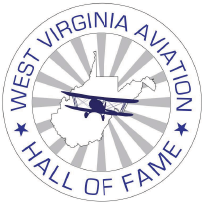
The West Virginia Aviation Hall of Fame honors pioneers and leaders in the aviation industry who have made significant contributions to the development, advancement or promotion of aviation and have close ties to the State of West Virginia.
Nominations may be made by any firm, organization or individual familiar with the nominee’s achievements. Nominees must meet certain criteria as established by the WV Airport Managers Association (WVAMA). The selection committee is composed of the President of the WVAMA, the Chairman of the West Virginia Aeronautics Commission, the Director of the West Virginia Aeronautics Commission, a WVAMA Corporate Board Member, and three appointed WVAMA Members.
The West Virginia Aviation Hall of Fame is located in the terminal building of the North Central West Virginia Airport in Clarksburg, WV. Each inductee is honored by having a descriptive plaque praising their contributions to West Virginia aviation.
2023 Inductees
Thomas R. Cochran
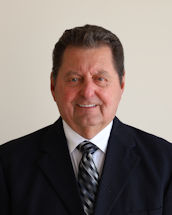
Thomas R. Cochran
Born in Beaver, West Virginia, on July 8, 1940, Thomas (Tom) R. Cochran dedicated the latter part of his career to ensuring aviation’s success in southern West Virginia. Originally a coal miner, Tom pursued a second career in aviation, attending the Spartan School of Aeronautics in Tulsa, Oklahoma. It was there he earned his Federal Aviation Administration certifications in 1968 in aircraft maintenance, radio operations, and aircraft accident insurance investigation.
After receiving his A & P license, Tom was hired by Trans World Airlines (TWA) as an aircraft mechanic based at Dulles International Airport where he worked for 3 years until a nationwide layoff forced him to look elsewhere for employment. He found work with the Pittston Coal Company and remained until retiring on July 7, 1997. The following day, Tom was hired as the Director of Raleigh County Memorial Airport, located in Beaver, WV. It was here his aviation career would flourish.
Aside from Tom’s commitment to a safe airport operating environment, his foresight and understanding of how airports serve as economic engines is second to none. His role in promoting the airport as a self-sustaining entity - ripe with economic opportunity for the entire region - propelled the Raleigh County Memorial Airport forward. Under Tom’s guidance, the airport completed several projects to improve safety, including obstruction removal, major interior and exterior passenger terminal renovations, and the oversight of the development of the corporate hangar area and industrial park which led the way for future economic growth. His push for economic diversification led to a partnership with higher education, offering training to those seeking positions in aerospace technology. This alone is extraordinary as graduates now have the choice to stay in West Virginia for the entirety of their aviation careers, keeping the economy growing.
It is perhaps Tom’s service to his community for which most recognize him. Always an advocate for West Virginia, Tom served with numerous volunteer organizations, including Visit Southern WV and the New River Gorge Regional Development Authority. Tom’s successful career and outstanding character are truly inspiring. His impact on aviation perfectly lends itself to his induction into the WV Aviation Hall of Fame. Tom and his wife, Barbara, currently reside in Kingsland, Georgia. They are the parents of Wendy Campbell and Susan Cochran, and have 3 grandchildren. The State of West Virginia is honored to recognize his significant contributions to aviation.
Perry E. Dillon
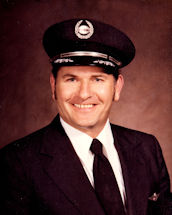
Perry E. Dillon
Born in Barton, West Virginia, on March 29, 1937, Perry E. Dillon not only pursued his own passion for flight but steadfastly assisted others in pursuing theirs, ensuring aviation thrived in West Virginia. Perry’s love for aviation took root early in life after seeing a P-51 Mustang up close. It was not until 1956 in Chagrin Falls, Ohio, that Perry was able to record his first flight. It would not be the last time he would fly; in fact, it was only the beginning.
Having experienced the wonder of flight, Perry continued flight training in Elkins, West Virginia, as money allowed. He finally secured his Private Pilot license in April 1960. He continued down this path, supporting his growing family by day and pursuing his aviation dreams in the evenings. It was June 1961 before Perry secured his Commercial Pilot’s license. He immediately began building time towards his ultimate goal of employment with an airline. He became a Certified Flight Instructor in January 1962; however, Perry experienced a temporary roadblock. There was no demand for flight instruction nor any aircraft with which to provide instruction. This spurred his decision to move to Mississippi to train for crop dusting.
Fate would step in while Perry was in Mississippi in the form of a group of Elkins, WV, residents who were seeking an instructor for their soon-to-be-formed flying club. Perry accepted their invitation to return to Elkins and in May 1962, the Club was operational with their first aircraft. In the first year of operation, Perry would assist 27 pilots through their first solo flight with a total of 100 students in training by January 1964. In April 1964, Perry finally achieved his dream of becoming an airline pilot after securing a position with Lake Central Airlines. His professional airline career would span more than three decades and culminate in his upgrade to Captain with U.S. Air before retiring in 1994.
His love for aviation endured after retirement. His selfless demeanor made him approachable to all, and he readily shared his wealth of knowledge with fellow pilots at the Elkins-Randolph County Airport. It was his unwavering support of aviation and nearly fifty years of training pilots in the Elkins Pilot Club that earned him recognition from the Aircraft Owners and Pilots Association (AOPA). He and his wife, Reta, were the parents of two sons - Nick and Rick - and three daughters – Betsy, Deb and Donna. Perry died at his home in Beverly, West Virginia, on June 16, 2021. His commitment to aviation was evident to all who knew him and the state of West Virginia is proud to recognize his influence on aviation.
2022 Inductees
Hubert H. Stark
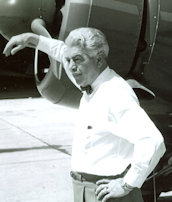
Born in Wheaton, Illinois, on December 27, 1897, Hubert Henry Stark “Stark” spent a lifetime promoting the advancement of aviation in West Virginia, determined to keep air tragedies to a minimum. Stark was raised in Wisconsin Rapids, Wisconsin, and served in France during World War I with the US Army. After discharge, he joined the Wisconsin National Guard as a 2nd Lieutenant in Battery E, 120th Field Artillery while attending Marquette University.
In 1925, Stark become the second student to become a licensed pilot through NEPCO Tri State Flying Service School in Wisconsin. After securing flight hours flying in Detroit and Chicago, he relocated to Florida, working as a flight instructor for Curtiss-Wright and flying between Miami and Havana.
In 1930, Stark responded to an advertisement seeking a flight instructor at Wertz Field in Institute, West Virginia. He began flying for West Virginia Airways, Inc., the first authorized air service in West Virginia. When the airline was dissolved, he and his wife, Beulah McCown Stark, and Beulah’s brother founded Mountain State Air Service, Inc., and continued flying commercial flights in 1935. The main focus of Mountain State Air Service was to buy, sell, and repair airplanes as well as instruction, aerial photography, and commercial service. Stark obtained and held his mechanic’s license (A&P), applying his hands-on knowledge to ensure a safe operation.
During World War II, Stark served as Wing Commander for the West Virginia Civil Air Patrol. Given his connections and vast experience in all areas of aviation, he became the Director/Inspector for the West Virginia Board of Aeronautics in 1937 and remained until the formation of the West Virginia State Aeronautics Commission in 1947 over which Stark served as the first Director. Stark had a reputation of being a stickler for flying safety and an advocate for the development of airfields.
After retirement in 1958, Stark remained active in his community through his involvement in organizations such as the Quiet Birdmen, the Veteran Pilots Association, and the National Aeronautical Association. Stark died at his home on Tyler Mountain on May 12, 1963. Following his death, the Fairmont Times depicted him as, “the father of commercial aviation,” in West Virginia. His passion for the industry was second to none, and the State of West Virginia is proud to recognize his contributions to aviation.
Stephen G. McCoy
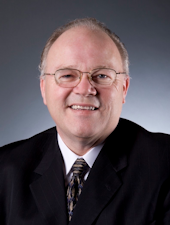
Born in Holywood, Ireland, on December 11, 1957, Stephen McCoy’s positive impact on the aviation industry in West Virginia will be felt for years to come. Stephen’s early career in aviation began in 1974. He obtained a degree in Mechanical Engineering from North Down Technical College while completing his apprenticeship with Shorts Brothers located in Belfast, Northern Ireland. His varied experience served him well, and he rose from an apprentice technician to the Operations Manager of the Tucano Project. He relocated to the United States in 1994 and soon called West Virginia home after accepting a position with Bombardier Regional Aircraft Services, formerly West Virginia Air Center. It was here he made a truly lasting impression overseeing activities in the United States, United Kingdom, and Canada in numerous roles.
In 2004, Stephen became the General Manager of Bombardier, overseeing all maintenance and repair operations while maintaining constant, professional communication with clients. Bombardier was acquired by Mitsubishi Heavy Industries RJ Aviation Group (MHIRJ) in 2019. Stephen's work ethic, commitment to excellence, and devotion to overcoming challenges has had a massive impact on MHIRJ’s operation in West Virginia. He assisted in securing MHIRJ Aviation as the largest Maintenance, Repair, and Overhaul (MRO) operation in the world with main offices located in Bridgeport, West Virginia. This investment by MHIRJ is already paying dividends to aviation in the state; MHIRJ is in the first phase of expansion in Bridgeport. This historic expansion effort allows MHIRJ to service larger aircraft at their facility at the North Central West Virginia Airport (CKB), producing an unprecedented economic impact.
His knowledge, while impressive alone, was not the sole reason for his success. His natural leadership skills and foresight into equipping employees for the future allowed Stephen to climb the ladder to success. His hands-on work ethic allowed him to understand the needs of his employees, translating into superior service to clients. This became the foundation of MHIRJ’s success.
Stephen retired from MHIRJ in 2021 after 48 years of outstanding service but not before ensuring his department - along with the entirety of its operations - was safely transitioned and that his clients' needs were met. He and his wife, Mary, reside in Clarksburg, West Virginia. For his unwavering dedication to aviation and the immeasurable impact his career has made, the State of West Virginia is honored to recognize his contributions.
2020-2021 Inductees
Beulah McCown Stark
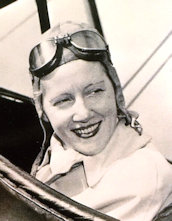
Born on April 2, 1912, in Kanawha County, West Virginia, Beulah McCown would make a lasting impact on aviation in West Virginia. Beulah developed an interest in flying at an early age. She grew up on Tyler Mountain and attended Charleston Business School and Morris Harvey College. In the fall of 1930, she began receiving flight training from Hubert H. Stark, whom she would later marry. On December 13, 1933, Beulah became one of the first licensed female pilots in the state at the time. A private pilot’s license was not enough, and Beulah would go on to receive her commercial pilot’s license in May 1934.
Throughout the 1930’s, Beulah traveled across the country performing aerial aerobatic shows for large crowds. She became known as “one of the state’s foremost women fliers.” Her passion for aviation led Beulah to found the first West Virginia Chapter of the Ninety-Nines, an organization devoted to providing mutual support and advancement of aviation for female pilots, serving as its first President.
Together with her husband and brother, Beulah founded Mountain State Air Service, Inc., in 1935, a company formed to buy, sell, build and repair airplanes. The outfit also provided commercial air service, aerial photography, and various other services. Beulah viewed flying as a means to support the country during World War II. She joined the West Virginia Wing of the Civil Air Patrol. Her rank of Warrant Officer allowed her to instruct and mentor both adults and high school students.
Beulah's logbooks provide interesting details of her adventures while noting she flew numerous aircraft- both open and closed cockpits - including a Great Lakes Trainer, Travel Air, Dual Stinson, Solo Stinson, Verville, Cub Co, Stinson Reliant and Byrd. By the 1950’s, with a growing family business to manage and at the request of her father, Beulah gave up flying, but her persistence in promoting aviation in West Virginia never failed. She remained active in the Pilot Club and the American Business Women’s Association.
Beulah McCown Stark died on July 7, 1984. Her dedication to furthering opportunities for female pilots in West Virginia is inspiring. Her love for flying endured throughout her life, and the state of West Virginia is proud to honor her impact on aviation.
Brig. General Frank K. Everest, Jr.
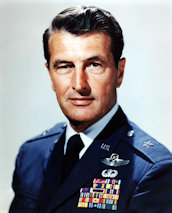
Born on August 9, 1920, in Fairmont, West Virginia, Frank K. “Pete” Everest, Jr., fell in love with aviation at a young age. After high school, Pete attended Fairmont State College and then West Virginia University where he studied engineering.
In 1942, Pete graduated and received a commission with the U.S. Army Air Force. After training in the P-40, he was ordered to North Africa where he flew 94 combat missions. In 1944, he was assigned to the China-Burma-India Theater where he commanded the 17th Fighter Squadron of the 5th Group. He completed 67 combat missions until his aircraft was shot down in May 1945, and he became a Japanese Prisoner of War until the end of the conflict.
After his release, Pete returned to duty and was assigned to the Flight Test Division at Wright Patterson Air Force Base. It was here he took part in experimental tests of the Bell X-1. He went on to become the Chief test pilot and participated in test programs for aircraft such as the F-100, B-52, B-57, and B-66. In October 1953, he established a world speed record of 755.149 miles per hour in a YF-100. In December 1954, he tested the Bell X-1B to a speed of Mach 2.3. Later flights in the Bell X-2 rocket plane established him as the "fastest man alive" when he attained an unofficial speed record of 1,957 miles per hour, or Mach 2.9.
From 1957 to 1961, Pete commanded various squadrons in the US, Germany and North Africa. January 1961 brought him stateside where he became the Director of Operations for the 401st Tactical Fighter Wing, England Air Force Base, in Louisiana. In 1969, Pete was transferred to the Pentagon as Assistant Director, Office of the Director of Defense Research and Engineering. He was promoted to Brigadier General in 1965 before retiring completely in 1973 after 29 years of service. Pete was inducted into the National Aviation Hall of Fame in 1989.
His military awards are numerous and include the Distinguished Flying Cross, the Purple Heart, an Air Force Presidential Unit Citation with two oak leaf clusters, and the Prisoner of War Medal. Pete and his wife, Avis, were the parents of three children- Frank, Victoria and Cynthia. He passed away on October 1, 2004 and is buried in Tucson, Arizona. It is with pride that the state of West Virginia honors Brigadier General Frank “Pete” Everest, Jr., for his significant development and participation in the advancement of Aviation.
Colonel Michael J. Cook
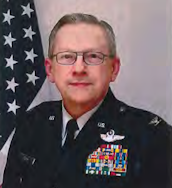
Born on April 1, 1947, in Pearisburg, Virginia, Michael J. Cook grew up in Kopperston, West Virginia, graduating from high school in 1965. He was appointed to the US Air Force Academy by then-West Virginia Senator Robert C. Byrd. After graduating in 1969, he attended pilot training and became a KC-135 Pilot. He was then assigned to the 909th Air Refueling Squadron, Kadena AB, Japan, where he flew air refueling missions during the Vietnam war. Assigned to 55th Strategic Reconnaissance Wing, Offutt AFB, Nebraska, he flew reconnaissance sorties worldwide. Col. Cook obtained his master’s degree in Nuclear Engineering and became a leading expert in Nuclear Weapons Effects.
Col. Cook returned to the 55th, serving as Chief, Standardization/Evaluation before becoming Operations Officer, 38th Strategic Reconnaissance Squadron. He then moved to command the 384th Air Refueling Squadron at McConnell AFB, Kansas. There he helped the beddown for a new B-1 Bomber squadron and its nuclear mission.
As Commander, 922d Strategic Squadron, Hellenikon AB, Greece, Col. Cook directed the move of the 922d from Hellenikon to Souda Bay, Crete, during Desert Storm with 100% mission-effectiveness. He was reassigned as Deputy Commander, 55th Operations Group, Offutt AFB. He was responsible for the RC-135 worldwide reconnaissance, EC-135 command and control, and E-4B Presidential Support. He moved the 24th Strategic Reconnaissance Squadron from Alaska to Offutt and reactivated the 82d Strategic Reconnaissance Squadron at Kadena AB. In 1994, he served as Deputy Commander, 4409th Operations Group, Riyadh AB, Saudi Arabia.
In 1995, Col. Cook became the Air Attaché at the American Embassy in Greece and served as the Air Force representative to the Hellenic Air Force. He retired in 1999 after 30 years of service. His military decorations include the Legion of Merit, the Defense Meritorious Service Medal, the Air Force Meritorious Service Medal, 9 Air Medals, and the Air Force Commendation Medal. Col. Cook established the Contract Aircrew Training program at Offutt for the RC-135 crews of the USAF and the RAF. He continues as an Instructor Pilot and serves on the Nebraska Aeronautics Commission.
Col. Cook and his wife, Tina, reside in Nebraska and are the parents of Linda and Michael. The State of West Virginia is honored to recognize Colonel Michael Cook’s immeasurable influences in aviation.
Lt. Colonel Clement H. Armstrong
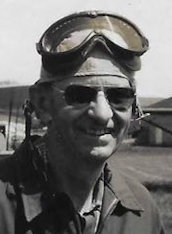
Born on June 6, 1917, in Fort Ashby, West Virginia, Clement Harold Armstrong was fascinated by flight. It was his purchase of a damaged 1929 Swallow TP in 1940 which changed the course of his life. Upon safely repairing the aircraft, he soloed after less than four hours of dual instruction. In 1941 he was inducted into the Army, completing an Air Corps Mechanics course before being accepted into the Aviation Cadet Program and officially receiving his wings.
In the summer of 1944, Harold became an instructor and flight examiner for the B-17 and later transitioned to the B-29 before being released from Active Duty in 1945. He returned to West Virginia and gained employment as a flight instructor and charter pilot while maintaining a Reserve Commission with a unit in Pennsylvania. In the Fall of 1950, Lt. Armstrong was ordered to extended Active Duty, extending until his retirement in 1973. He was credited with 1,119 combat support sorties.
Harold’s military experience includes over 15,000 hours of flying time. His awards and decorations are numerous and impressive and include an Air Force Commendation Medal, American Defense Service Medal, National Defense Service Medal with Bronze Service Star, Vietnam Service Medal with 4 Bronze Service Stars and Vietnam Campaign Medal with 60 Devices.
Following his military retirement, Harold returned to western Maryland and performed a variety of aviation jobs. Retirement afforded him the opportunity to begin working, along with his son, Robert, on aircraft restoration projects that he had acquired throughout the years. Meticulous restoration of these beloved aircraft began with the 1927 Waco 10 followed by a 1946 Aeronca 7-AC, the 1927 Pitcairn PA-4 and the 1946 Schweizer 1-19. While all were noteworthy, the Experimental Aircraft Association (EAA) recognized the first three as major award winners. He is one of only a handful of individuals to have won the Grand Champion Award in both Antique and Classic categories for the EAA. His 1946 Schweizer 1-19 won the Most Authentic Restoration Award from the International Vintage Sailplane Meet in 1995.
Lt. Colonel Harold Armstrong and his wife, Martha, had one son, Robert. Colonel Armstrong passed away on December 21, 2004; Martha died in November 2021. They were both laid to rest at Arlington National Cemetery. Whether speaking of his commitment to the Military or his ability to masterfully recondition aircraft, the state of West Virginia is proud to honor his contributions to Aviation.
2019 Inductees
Charles A. "Chuck" Koukoulis
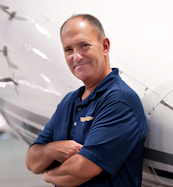
Born on June 18, 1953, in Clarksburg, West Virginia, Charles Angelo "Chuck" Koukoulis was born into aviation as the son of a prominent aviation business owner. Chuck would soon set his own mark on the industry, creating lasting impacts on the state and beyond.
It was at an early age that Chuck developed a keen interest in aviation as his days were spent learning all facets of the family business, AeroMech, Inc. While working as an apprentice aircraft mechanic, he began honing his flying skills, and his first solo flight was on his 16th birthday. After graduating from Bridgeport High School in 1971, Chuck attended West Virginia University (WVU) and Salem College, while working in AeroMech's avionics department, as an apprentice mechanic for the Beech 99 fleet as well as in the company's marketing department.
During 1978-1980, Chuck worked to restore AeroMech’s Cessna Aircraft Dealership into a profitable enterprise, growing the dealership from from basic single-engine aircraft into the high product performance single-engine product line. In 1980, he was named Executive Vice President/General Manager of AeroMech and spent the next several years focused on airline operations. AeroMech achieved aviation history in 1980 when Chuck ordered the first six Embraer 120 Brasilia aircraft in the world. He was part of the flight crew that flew the fifth Embraer 110 to enter the US from the factory in Brazil. AeroMech became an independent airline in 1982 and was the second largest carrier at Greater Pittsburgh Airport at that time, operating 43 flights to 17 cities from three gates at the terminal. AeroMech merged with Wright Airlines in 1983, and, thereafter, Chuck established KCI Aviation at the North Central WV Airport in Clarksburg, WV (KCKB). The company provided an FAA-certificated aircraft repair station, aircraft charter, flight school, and refueling services. KCI's key emphasis on pilot training included the development of several collegiate-level programs and a foreign exchange program.
In late 1987, Koukoulis was contacted by the Short Brothers aircraft company of Belfast, Ireland. The result of that effort developed into what is now the Bombardier West Virginia Air Center. Drawing from his airline experience, Koukoulis pursued the same depot-level maintenance service for the corporate aircraft sector and achieved many milestones. KCI became an integral part of Pratt & Whitney's logistical support and one of only three Centers of Excellence worldwide - the only one in the US - providing Post Rental Inspection work on turbofan engines for Pratt &Whitney's Leasing Division.
Chuck's dedication to aviation is tireless and irrefutable. His lifelong commitment and drive have provided opportunities to countless individuals. His accomplishments have helped strengthen the State of West Virginia’s presence in the aerospace industry. We are honored to recognize his contributions to aviation, the region, and our state.
Colonel John R. Morgan
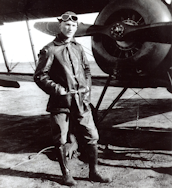
Born on December 18, 1893 in Minnie, West Virginia, John Ross Morgan would go on to be instrumental to the formation of the Air Corps Gunnery School in Harlingen, Texas. Morgan first became a military pilot in 1918, flying a Curtiss JN-4, before advancing to specialty programs in support of military preparedness. His expertise in aerial gunnery and pilot training led him to Texas where his legacy came to life.
Morgan was promoted to Director of Flying and Academic Training for the Army Air Corps during the pre-World War II military expansion. With a shortage of combat-ready pilots, he was tasked with establishing an aerial gunnery school in Harlingen, Texas, on land donated by the City of Harlingen. On August 1, 1941 Morgan became the first Commanding Officer of the newly-established Harlingen Army Air Field, entrusted with overseeing the construction of the first runway and expansion of the military facility. With his extraordinary vision and creative problem-solving skills, Col. Morgan supervised the development, composition, and efficient operation of a diversified aerial gunnery training course. The training course proved essential to the training of military pilots and gunnery technicians in a five- week program, while contributing greatly to the war effort. In support of ensuring the decline in aviation accident rates, a transition school was inaugurated in 1942 which assisted in standardizing military flying. In 1943, the Harlingen Army Air Field was designated a B-24 “Liberator” gunnery school, branching out even further. During Col. Morgan’s three-year tour of duty as the Commanding Officer of Harlingen Army Air Field, over 37,000 gunners and nearly 700 B-24 co-pilots graduated.
In August of 1944, Col. Morgan was reassigned as the Commanding Officer of the 79th Flying Training Wing, where he served until assignments took him overseas. In 1948, he became the Inspector General for the Air Material Command at Wright Patterson Field in Ohio, a position he held until 1950 when he accepted his last military orders to be Commander of Goodfellow Air Force Base in San Angelo, Texas. He retired in 1953.
Colonel Morgan and his wife, Marie, welcomed four children - Alma, Jean, John, Jr., and Donald - all of whom were positively influenced by his distinguished military service. His awards and achievements far outweigh what can be encompassed in this brief biography, but they include the Legion of Merit, World War I Victory Medal, World War II Victory Medal, American Campaign Medal, and Army of Occupation Medal. Colonel Morgan passed away on January 27, 1968, and is buried at the Fort Sam Houston National Cemetery in San Antonio, Texas. The state of West Virginia is honored to recognize his tremendous contributions to aviation.
2018 Inductees
Samuel James "Sam" Frankman
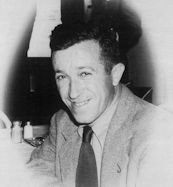
Born on August 27, 1914, in Fairmont, West Virginia, Samuel J. Frankman was in many ways a life-long aviator. Throughout his career, he served as a pilot, an aviation company owner and manager, a barnstormer, a flight instructor, an FAA Designated Pilot Examiner (DPE) and a mentor to numerous aspiring pilots.
Shortly after graduating from high school, Sam learned to fly in an OX-5-powered Bird biplane and spent the next few years barnstorming and providing rides for the public in open-cockpit biplanes, including the Boeing Stearman and PT-23. Sam flew with many of the area's well-known barnstormers, such as Weyman Coe and Ralph "Jelly Belly" Boone.
In 1941, Sam became a flight instructor and provided training for new military pilots under the Civilian Pilot Training (CPT) program. In the years surrounding World War II, he trained hundreds of pilots in the West Virginia University ROTC program and under the GI Bill, which provided subsidized training for returning veterans.
In the 1950's, Sam was awarded a federal grant to operate the Fairmont Seaplane Base on the Monongahela River in Fairmont, the only flight facility of its kind in West Virginia. He later went on to become an FAA DPE and was responsible for administering the oral and written flight tests for aspiring pilots.
In the late 1950's, Sam was selected to be the Executive Pilot for J.W. Ruby, a Morgantown businessman who owned and operated several businesses across the eastern United States. He also provided transportation to a number of nationally-known individuals, including journalists Drew Pearson and Jack Anderson, Senators Margaret Chase Smith and Jennings Randolph and First Lady Eleanor Roosevelt, who often visited the state.
Sam became the Acting Airport Manager for Morgantown Municipal Airport (Hart Field) in 1970 and was later named the General Manager of Allegheny Commuter in Morgantown.
Sam was the recipient of numerous aviation and civic awards, including the FAA's prestigious Eastern Region Flight Instructor of the Year (1986), the Distinguished West Virginian Award (1987), and an honorary Doctorate Degree in Aeronautical Science from Salem College in West Virginia (1988). In recognition of his many achievements, Fairmont Municipal Airport was officially named Frankman Field in 1986.
Samuel J. Frankman died on March 29, 2001, after a lifetime devoted to the aviation profession in West Virginia. He was preceded in death by his wife, Helen Moors Frankman and survived by his son, James Frankman Thompson and sister, Marie Frankman.The state of West Virginia is proud to honor his contributions to aviation.
James Richard "Jim" Griffith
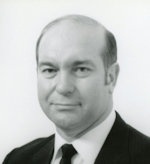
Born in Wheeling, West Virginia, on August 10, 1947, James "Jim" Griffith dedicated his entire career to aviation. Following high school, he attended West Liberty State College in West Virginia and later graduated from Weaver Airline School in Kansas City, Missouri. He then went on to receive an Associate’s degree from Belmont Technical School in Ohio.
Jim started out his career in aviation by serving as a ticketing and baggage agent for National Airlines, followed by a position with WTC Airfreight in Long Island, New York. Jim quickly progressed within the aviation industry and soon worked his way back to the mountain state to serve in airline Station Manager capacities at several airports, including those in Wheeling, Beckley and Clarksburg, WV, and in Cleveland, Ohio. During that time, he worked for AeroMech Airlines, Wright Airlines and Crown Airways/USAir Express. In 1994, Jim was hired as the Director of the Benedum Airport (now North Central West Virginia Airport), in Clarksburg. During his tenure, he oversaw a major, three-year airport expansion project that increased the runway length at the Clarksburg Airport from 4,000 to 7,000 feet, and created several acres of developable land - a $32 million project that involved the moving of over 10 million cubic yards of earth. He was responsible also for the airport's completion of a variety of safety and construction projects and equipment upgrades, including several terminal building and facility renovations, the installation of a passenger jetway, and the purchase of emergency and snow removal equipment. In 2007, Jim oversaw the extension of the runway an additional 800 feet in order to establish the proper runway safety areas on each end. Jim played a large part in arranging the charters for WV University football and basketball teams and personally met each flight, regardless of the weather or time of day. He also set up a program to put the airport in the business of fueling commercial aircraft. He retired in the fall of 2009 from his position of Airport Director, after an aviation career spanning three decades, and worked briefly as a Grounds Director for Thrasher Engineering. He devoted his post-retirement years to his outdoor hobbies of hunting, fishing and gardening. Jim passed away on September 4, 2017, but his efforts to enhance aviation within West Virginia live on through the continued successes of the North Central West Virginia Airport and the economic impact that the airport has on the entire community and region. Jim is survived by his wife, Georgette. The state of West Virginia is proud to recognize his contributions to aviation.
2017 Inductees
Katherine Coleman Goble Johnson
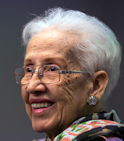
Born in White Sulphur Springs, West Virginia, on August 26, 1918, Katherine Johnson would go on to contribute her talents to space exploration.
Graduating high school at the age of 14, Johnson went on to attend West Virginia State College (now West Virginia State University), majoring in French and Mathematics before graduating summa cum laude at the age of 18. Her education continued when she enrolled in graduate school at West Virginia University and became the first African-American woman to desegregate the program.
Beginning in the 1950’s, Johnson applied her mathematical skills and became a “computer” for the National Advisory Committee on Aeronautics. She analyzed data from black boxes and studied topics such as gust alleviation for aircraft in the furtherance of the progression of flight. While both racial and gender segregation were prevalent at the Langley Memorial Aeronautical Laboratory where she worked, her accuracy and brilliance in complex mathematical concepts earned her an unprecedented seat among the engineers of the all-male flight research team. When the National Aeronautics and Space Administration (NASA) was created in 1958, Johnson became a valued member of the Langley Space Task Group.
Johnson is credited with calculating the trajectories, launch windows, and emergency back-up return paths for Project Mercury’s 1961 launch and the 1962 first American manned orbit of the earth. Her abilities were so well-regarded, John Glenn requested that Johnson double-check the computer calculations by hand to ensure the new machine’s calculations were correct before his 1962 manned orbit. Her contributions continued through to the Apollo 11 lunar landing as well as Apollo 13’s aborted mission to the moon, where her work was vital in bringing the crew safely back to earth. She retired in 1986.
Her awards and accolades include six Langley Research Center Special Achievement awards, a 1967 NASA Lunar Orbiter Spacecraft and Operations team award, and a 40,000-square foot building dedicated in her honor at the Langley Research Center. In 2015, President Obama bestowed upon her the Presidential Medal of Freedom, the highest civilian honor.
The state of West Virginia is proud to honor Katherine Johnson’s contributions to the advancement of aviation.
George Spencer "Spanky" Roberts
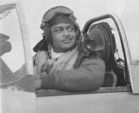
Born on September 24, 1918 in London, West Virginia, George Spencer Roberts became one of the first class of cadets to complete training at the Tuskegee Institute before defending our great nation in the skies.
Roberts graduated from high school at fifteen and went on to enroll in West Virginia State College (now West Virginia State University) where he earned a Bachelor of Science degree in Mechanical Arts. He continued his education and received his teaching certificate before enrolling in the Civilian Pilot Training Program Unit III in 1939. Roberts entered preflight training with the first class of thirteen African-American trainees at the Tuskegee Institute. He was among five trainees who successfully finished the first class and was later commissioned as a second lieutenant in 1942. He became commander of the 99th Pursuit Squadron, making him the first African-American commander, one of three times in total he would hold this title during his career.
His military occupation would see him engaging in dangerous missions which drew brave and heroic actions, including missions over Italy and Yugoslavia and flying reconnaissance over Austria and Germany. Roberts would fly approximately 100 combat missions during World War II before resuming command of the 332nd Fighter Group in 1945. His knowledge served others well when he became Professor of Air Science and Tactics at the Tuskegee Institute.
In 1950, Roberts was the first African-American Commander of a racially integrated Air Force unit and he became a jet qualified pilot before assisting in the Korean War. His talents extended beyond flying, as evidenced by his appointment as the Director of Materiel for the 313th Air Division in Okinawa, Japan and his time serving as the Air Force Logistics Command in 1963.
He worked on the F-104 Freedom Fighter project at McClellan Air Force base while later serving as the Deputy Director of Logistics for fighter operations in Vietnam and space missiles and logistics in the Pacific Ocean area.
Roberts retired from the military in 1968 with the rank of Colonel. He continued to serve his community proudly by participating on various boards and committees in the Sacramento area where he lived with his wife, Edith.
His awards include the Distinguished Flying Cross, an Air Medal, seven commendation medals, two Presidential unit citations. In addition, he was named honored pioneer at the “Black Wings” exhibition at the National Air and Space Museum in 1982. The state of West Virginia proudly thanks him for his contributions to aviation.
2016 Inductees
Earl T. Halloran
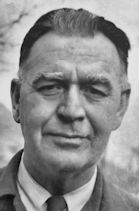
Earl Thomas Halloran was born July 1, 1896 in Hinton, West Virginia, to a prominent railroad family. He was known to be an intelligent man with many talents including a knack for flying. Halloran attended West Virginia University to study Engineering before the eruption of World War I. Upon announcement of the United States’ involvement in the war, he decided to enlist in the U.S. Army where he was assigned to the U.S. Army Signal Corps to become a pilot. His flight training at Rich Field in Waco, Texas exposed his natural ability to aviate. He successfully soloed after just four and a half hours of flight instruction in a Curtiss JN-4D aircraft (aka “Jenny”) and was commissioned a First Lieutenant in March of 1918. Instead of being sent overseas, he was retained as a flight instructor because of his flying expertise and radio skills. In addition to flight instructing, he trained his students on various positions, such as gunner and mechanic, to ensure they could be cross-utilized in the aircraft. Halloran remained a flight instructor for the duration of the war. With his training and guidance, his students went on to assist the Allied Powers in defeating the enemy.
At the conclusion of the war, Halloran returned to Hinton where he formed the Hinton Aero Club. He purchased a surplus "Jenny” aircraft by soliciting funds from local individuals. The “Jenny” was then used by the Aero Club to barnstorm across the state carrying passengers and thrill seekers alike. Halloran’s barnstorming days were halted in August of 1919 when he was hired by the Island Creek Coal Company to “scout” the area and provide aerial information on the location of 5,000 armed miners planning a march in order to unionize. At the most volatile point of the miners’ unionization efforts, Halloran was made a captain of a group of five other aircraft hired by the coal company and prepared homemade bombs to drop if necessary to thwart any attack on law enforcement personnel. Countless lives were saved with the aerial information Halloran provided.
Earl Halloran’s aviator days were not without incident. He once survived an accident in Logan after clipping wires during takeoff and, ultimately, it was a nose dive into a fence at the end of a cornfield that effectively ended his flying career when it was determined that his aircraft was damaged beyond repair. Unable to secure capital to purchase a new aircraft, he sought other opportunities to earn a living and started a bus service, automobile dealership and the first cable TV company in Hinton, WV. His contributions to aviation in the state of West Virginia and abroad lives on. Earl Halloran was believed to be the first registered pilot in the state, a fact many support. The unfortunate state capitol building fire in 1921 destroyed the proof of this honor. He was a respected businessman with interests beyond aviation too numerous to encapsulate on this plaque. The State of West Virginia honors his accomplishments and recognizes him for his contributions both here and abroad.
Eldon J. Haught
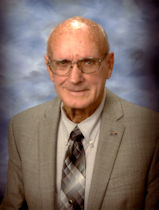
Born August 24, 1936 in Beatrice, West Virginia, Eldon J. Haught grew up harboring an interest in aviation. His love for aviation would come back to serve the flying community in more ways than one. Upon graduating, Haught worked in the oil and gas industry before becoming co-owner of Alfab Inc., among other successful business ventures. His business insight was second to none and leaders throughout the area recognized this by appointing him to numerous boards where he served dutifully.
It was in August 1977 that Haught successfully soloed in a Cessna 152 and in 1978 he became an official certificated private pilot finally fulfilling his lifelong dream. It was not long after in 1982 that Governor Rockefeller appointed Haught to the State Aeronautics Commission. His understanding of aviation, coupled with his keen sense of business, ensured the Commission was able to provide the maximum financial support to the state’s airports for the benefit of the public. Haught was so devoted in his endeavors that the Commission repeatedly elected him Chairman. He ensured meetings were accessible to all airports throughout the state and made them available by rotating the meetings among airports to provide the greatest accessibility as possible. The rotation also allowed the airports to showcase their strengths as well as their needs to the Commissioners firsthand.
One of Haught’s greatest accomplishments while serving on the Commission included obtaining the Fire Fighter Training Simulator for commercial service airports in the state. Simply obtaining the simulator was not enough for Haught. He went a step further and supported the annual cost to maintain the simulator relieving airports of this financial burden. Search and rescue was also of importance to Haught who took a personal interest in ensuring other individual’s safety stemming from a tragedy. In 1964, Haught helped establish the Smithville Volunteer Fire Department—a cause which became dear to him after his son was killed fighting a fire with the fire department. This gave life to a scholarship fund that has helped more than 70 Ritchie County families and guided an outlook that included supporting the state of West Virginia’s funding the Civil Air Patrol.
To list all of Haught’s accomplishments is not possible on one plaque. Notable awards bestowed upon Haught include the 2003 Jefferson Award for Community Service, the 2014 Ritchie County DAR Award for Community Service, and becoming an honorary graduate of the University of Hard Knocks at Alderson Broaddus University in 2008. The State of West Virginia is honored to recognize Eldon Haught’s contributions to aviation and thanks him for his loyal commitment to the furthering of aeronautics.
2015 Inductees
Angelo Koukoulis
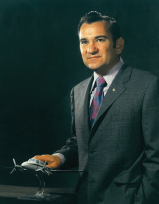
Born February 26, 1925 in Weirton, West Virginia, Angelo Koukoulis is a distinguished aviation professional who has been honored with numerous accolades throughout his career.
Upon graduating high school, Koukoulis enrolled in General Airmotive Technical School where he received his Federal Aviation Administration Airframe and Powerplant Mechanic certificate in 1943. Koukoulis was soon inducted into the Army Air Corps as a P47 fighter mechanic, serving from 1943-1945. His unit, the 48th Fighter Bomber Group 494 Squadron 9th Air Corps, arrived in Normandy 12 days after D-Day, providing much needed aircraft support at the airstrip located closest to the beaches. Following his Army discharge, he attended WVU and was employed by the University to oversee aircraft maintenance operations. He obtained his private pilot’s license in Morgantown, West Virginia in 1947.
He was appointed by the FAA as a Designated Aircraft Maintenance Inspector in February 1949. A new opportunity presented itself two years later when Koukoulis was invited, by what is now the Harrison County Commission, to operate a fixed base operation at Benedum Airport, now known as the North Central West Virginia Airport (CKB). His company, AeroMech, Inc., was the first Federal Aviation Administration radio repair station in the state. Koukoulis instituted an accredited course in career aviation through a local college and introduced the “buddy concept” for flight training, first used by the West Virginia University ROTC program and later adopted nationwide. In 1980 he founded West Virginia’s first fully certificated passenger airline, AeroMech Airlines, serving 23 cities in 7 states.
AeroMech, Inc. operated for 35 years as a Cessna dealer and a Cessna pilot center and at its peak, employed more than 250 personnel before merging AeroMech Airlines with Wright Airlines of Cleveland in 1983. Koukoulis was also instrumental in furthering the aviation industry by serving as a founding member and the first treasurer of the Regional Airlines Association of America, as well as serving as the Airport Manager of Benedum Airport for 22 years.
Today, Koukoulis’ legacy lives on through KCI Enterprises, Inc., known as KCI Aviation, an aircraft maintenance and repair organization. He has received various awards including the Charles Taylor Master Mechanic award in 1998. The State of West Virginia is proud to honor Angelo Koukoulis for his accomplishments in the field of aviation.
Irene I. Crum

Born February 5, 1910 in Huntington, West Virginia, Irene I. Crum was a pioneering female in aviation. With a curious passion for aviation, she successfully completed her first solo flight in 1936. Her aircraft of choice was an Aeronca C-2, unofficially dubbed “the flying bathtub” given the unique contours of the fuselage. Wanting to showcase what she could do with the aircraft, Crum flew to 19,423 feet, setting the altitude record for a two-cylinder aircraft. The flight itself was historic but making it even grander was the fact that Crum only had 40 solo hours of flying experience when she completed the flight. She had taken up flying a mere 14 months earlier.
Crum went on to become a member of the historic Women’s Air Force Service Pilots, or WASPs in World War II after graduating from Marshall College, or Marshall University as it is known today. Crum went on to become a flight instructor on behalf of the U.S. Government in Brazil.
Later on in life she returned to the U.S. and taught in Jacksonville, Florida before returning home in West Virginia. At the time of her death on April 9, 1977, the woman’s altitude record for a two-cylinder record had not been broken. The State of West Virginia recognizes her contributions to aviation and honors her memory.
2014 Inductees
Captain Jon A. McBride
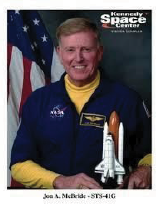
Jon A. McBride was born August 14, 1943 in Charleston, West Virginia. Though his aviation accomplishments are many, he is best known for being a NASA Astronaut.
McBride's service began in 1965 when he earned his wings as a naval aviator and was assigned to Fighter Squadron 101 based at Naval Air Station Oceana, Virginia, for training in the F-4 "Phantom II" aircraft. He was subsequently assigned to Fighter Squadron 41 where he served three years as a fighter pilot and division officer having flown 64 combat missions. He attended the U.S. Air Force Test Pilot School at Edwards Air Force Base then reported to Air Test and Development Squadron Four at Point Mugu, California where he served as maintenance officer and Sidewinder project officer.
McBride became a NASA astronaut in 1979 after being selected as an astronaut candidate the year before. His NASA assignments included lead chase pilot for the maiden voyage of Columbia. McBride was pilot of STS 41-G, which launched from Kennedy Space Center in Florida on October 5, 1984, aboard the Orbiter Challenger. Following the tragic events of the Space Shuttle Challenger in 1986, his next mission was deferred and McBride was assigned to serve as Assistant Administrator for Congressional Relations at NASA Headquarters. In May 1989, Captain McBride retired from NASA and the Navy having logged more than 8,800 hours in over 40 different types of military and civilian aircraft. His FAA ratings include commercial pilot (multi-engine), instrument, and glider; and he previously served as a Certified Flight Instructor (CFI).
The awards for his accomplishments and contributions include the Legion of Merit award, the Defense Superior Service medal, the Navy Commendation medal with Combat V, a Navy Unit Commendation, the National Defense medal, the Vietnamese Service medal, and the NASA Space Flight Medal. The State of West Virginia is honored to induct him into the Hall of Fame and appreciates his contribution to aviation.
James Kemp McLaughlin
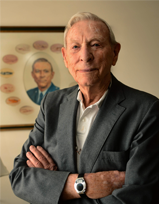
Born on December 7, 1918 in Braxton County, West Virginia, James Kemp McLaughlin grew up not in the world of aviation, but in the world of agriculture as a son of a farmer. He only considered a career in aviation after the Army Air Corps testing team visited West Virginia University in 1938 while he was attending college. Successfully passing the test he was too young to enlist without parental consent which he did not have. It would be another year before he reached the age of 21 and was able to enlist under his own accord, without parent approval.
After the bombing of Pearl Harbor, McLaughlin was deployed to England as a co-pilot and Second Lieutenant in the Mighty Eight’s 92nd Bombardment Group flying the famous B-17 bomber. After flying 39 combat missions and numerous “close calls”, he was ordered back to the U.S. in 1945 where he accepted a commission as a Lieutenant Colonel. He was subsequently awarded the Distinguished Flying Cross, with three clusters, the U.S. Army Air Corps Air medal with eight clusters, the French Croix de Guerre, and a Presidential unit citation. He finished his service in June 1946 at which time he and his wife, Constance Bailey, returned to Charleston, West Virginia with plans to return to civilian life. Those plans were altered in 1947 however, after the Adjutant General of the West Virginia National Guard asked McLaughlin to serve as the First Commander of the state’s Air National Guard squadron. In 1951 the squadron was federalized for active duty in the Korean War. Following the unit’s service in the Korean War, McLaughlin was promoted to full Colonel and was appointed to Assistant Adjutant General. He was eventually promoted to Brigadier General in 1962 before retiring from the military in 1977.
McLaughlin also enjoyed public service and served on many government branches; helping affect change and laws over the country he was sworn to protect. He became a Kanawha County Commissioner from 1963 to 1968 and was appointed into the West Virginia House of Delegates from 1974 to 1976. McLaughlin contributed his life to service in both the aviation and public sectors in West Virginia and we are proud to honor him.
C. William "Bill" Pancake
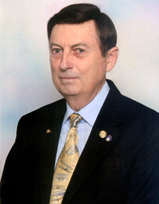
Born on February 9, 1940 in Keyser, West Virginia, C. William “Bill” Pancake Jr. discovered early in his life that he possessed a great mechanical inclination. His love for aviation began as a child when he would often ride his bike to the Keyser Airport where he would help out in exchange for spending money. It was on his 16th birthday that Pancake piloted his first aircraft alone.
Since receiving his private pilot’s license in 1957, he has gone on to additional ratings including: commercial, instrument, Multi-engine, Airframe and PowerPlant (A&P) with Inspection Authorization (IA) and is a Certified Flight Instructor. He began his work restoring and repairing small aircraft in the late 1950’s with Aeronca Sales and Service in Burlington, West Virginia.
After leaving the aviation industry for several years, he decided to open his own restoration shop known as Pancake Aviation in 1973. What began as a sideline business turned into a successful endeavor as his work is known worldwide; from the United States to Russia and Brazil. Pancake’s work received numerous awards at some of the largest aviation events including EAA AirVenture Oshkosh.
In 2006, he received both the Charles Taylor Master Mechanic Award and the Wright Brothers Master Pilot Award. Pancake was inducted into the EAA Vintage Hall of Fame in 2008. He has also been designated a Distinguished Mountaineer and Distinguished West Virginian.
Pancake has been a technical advisor for the National Air and Space Museum as well as a Classic Judge at EAA AirVenture Oshkosh. His expertise on restoration and repairing of classic aircraft, specifically the Aeronca, is unsurpassed. The State of West Virginia honors his quest to further aviation by painstakingly and whole-heartedly restoring classic aircraft and promoting aviation across the globe.
Donald J. Judy
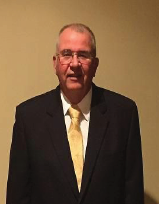
Born January 4, 1943 in Dry Fork, West Virginia, Donald J. Judy first experienced the wonder of aviation at the age of five in a Bonanza aircraft. His father maintained a grass strip on their farmland and his love for aviation thrived. After receiving his private pilot certificate in 1962, he continued receiving additional ratings through his hard work and dedication.
Judy’s ratings range from Single Engine Land and Sea to Multi Engine Land, Rotorcraft, as well as Glider. He is a certified flight instructor on all of the previously mentioned aircraft classifications and holds an Airframe and Powerplant (A&P) certificate with Inspection Authority (IA) designation.
In addition to assisting others pursue their dreams in aviation, Judy patiently and lovingly restores aircraft having overseen 10 complete rebuilt aircraft. He is also talented in the art of recovering fabric aircraft; a form in which few are currently proficient.
Judy is the recipient of the 2010 Wilbur Wright Award having been accident free for 50 years; a testimonial to Judy’s superior skillset. His contribution to aviation in West Virginia does not include military honors but is found in those students he taught as a flight instructor and the thousands of students he signed off on their check rides as a designated pilot examiner. The State of West Virginia recognizes Mr. Judy’s commitment to the betterment of aviation in the state and is proud to claim him as a West Virginian.
Senator John D. "Jay" Rockefeller IV

Born June 18, 1937 in New York City, John Davison “Jay” Rockefeller IV had a very distinguished public service career representing and governing the State of West Virginia and championing the importance of aviation along the way. Rockefeller first moved to Emmons, West Virginia in 1964 with Volunteers in Service to America where he quickly became involved in politics. He was elected to the West Virginia House of Delegates in 1966 and the office of West Virginia Secretary of State in 1968. Prior to being elected Governor of West Virginia in 1976, he served as President of West Virginia Wesleyan College. After two terms as Governor he was elected to the United States Senate representing the people of West Virginia. It was in the U.S. Senate where Rockefeller’s staunch support of aviation shined. He authored the successful Small Community Air Service Development Pilot Program which provides air service development assistance to those that qualify through the Department of Transportation. He became an outspoken leader of the Essential Air Service program, preventing drastic cuts to the program in 2012, enabling West Virginia airports to continue providing vital service to their communities. Following the tragedies of the September 11, 2001 terrorist attacks, he was one of the co-authors of the Aviation and Transportation Security Act which led to the creation of the Transportation Security Administration.
Rockefeller was honored the Wings of Liberty award from the Aerospace Industries Association in 2006. He held numerous leadership positions including Chair of the Senate Committee on Commerce, Science, and Transportation where he tirelessly advocated for adequate funding for the nation’s air transportation system. Speaking engagements at industry conferences include the American Association of Airport Executives as well as the National Association of State Aviation Officials and the Aero Club of Washington.
West Virginia appreciates and honors John D. Rockefeller IV’s commitment to our state and the various efforts in which he supported aviation throughout his career.

